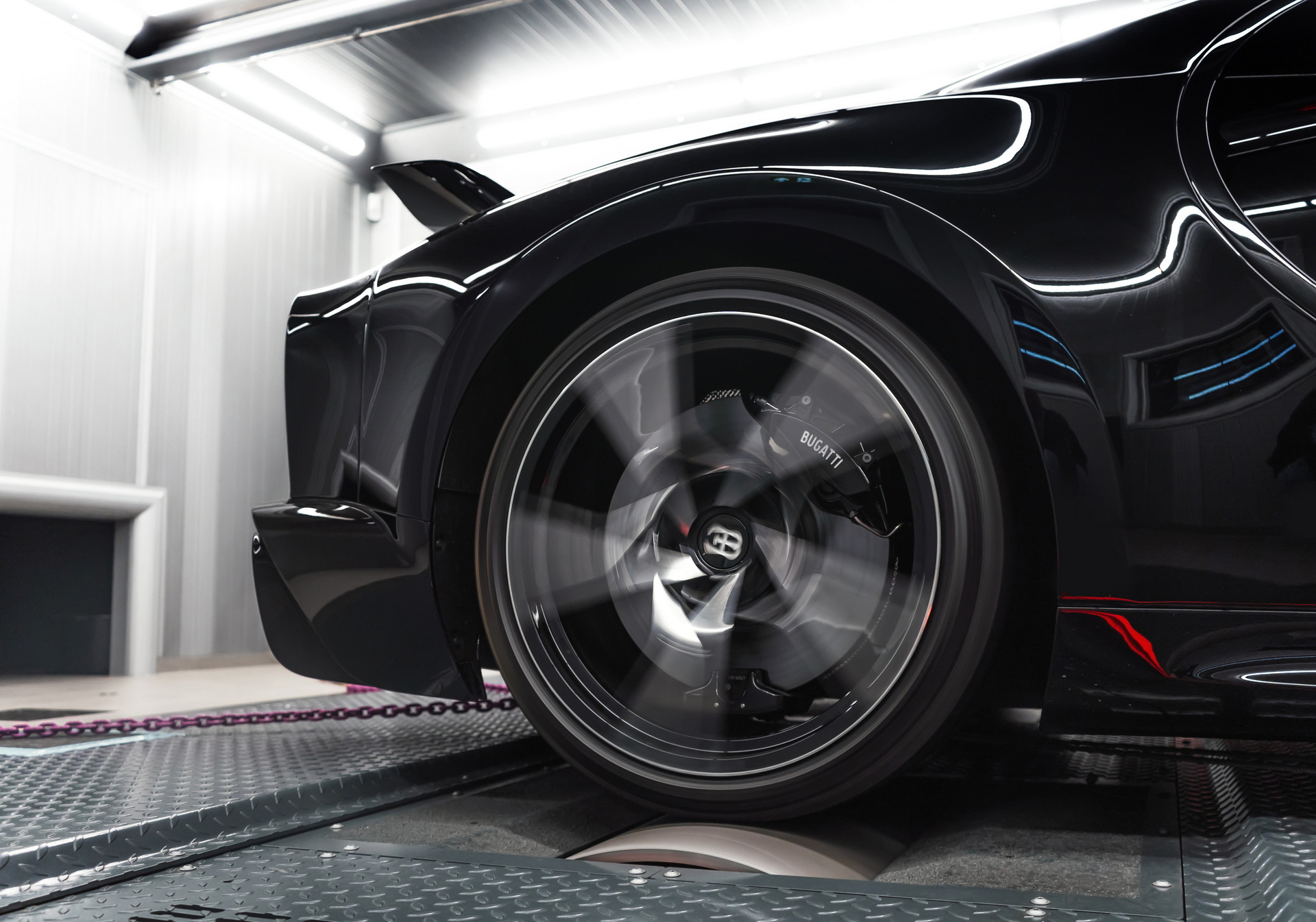Although dynamometers now seem commonplace, they are an important and huge technique. Bugatti is no more than what it uses to test its hypercars.
Designed specifically for high-speed applications, the Bugatti dyno is capable of testing at speeds of 298 miles per hour (480 km / h). Although this is a high speed, it is slightly higher than Chiron’s maximum speed of 273 miles (440 km / h). Even at low speeds, the forces are enormous.
At a speed of 261 miles (420 km / h), Chiron tires rotate at a speed of more than 50 times per second, which can put a force of about 4000 G on them. At these speeds, the air valve weighs 121 pounds (55 kg), Bugatti said.
Also read: Seeing a Bugatti Chiron at Dyno is a great sight

Of course, it’s not just gravity that puts huge forces on the rig; Hiron yes. To ensure that the dino is always securely fastened, the car must be held in place with 20 high-strength screws under the housing that secure the monocoque to the specially designed adapter boards. Each tile is tied with strong chains that compete with the others and fastened to the floor of the hall. To keep the car in constant contact with the dynamo, the chains must withstand a force of up to 24 tons.
Unlike other four-wheeled dinosaurs, where each axle has its own rollers, the Bugatti dinosaur has only one of its four wheels. This, the company says, reduces wheel slippage, bending and loss of performance.
“On a full-wheel single-roller dynamometer, all components can be tested in a neutral and clear way,” said Michael Guericke, developer of the Bugatti engine. “The level of resistance to driving is the same as on the road.”

Not only is this important for performance, it’s part of what makes the car capable of driving the enormous power of the Bugatti Chiron 8.0-liter W16 engine. The less slip and loss, the less the tires heat up, which allows you to check for high speeds.
It also means that the roller is very heavy, weighs 3.5 tons and weighs about 1587 pounds (720 kg). It also has a maximum braking power of 1609 hp. (1200 kW / 1631 horsepower).
The large fan in the Bugatti test room can move 10,594,400 cubic feet (300,000 cubic meters) of air per hour to model the actual airflow over the vehicle and provide the engine and cooling systems with the required airflow.
“This means that we can guarantee a free and, above all, safe running even at full load and at maximum speed,” said Guerique. “We can also repeat the tests at any time of the year and regardless of the weather. This will help us to constantly look for technical improvements. “
Finally, the car was tested and found to be indeed 1596 hp. (1190 kW / 1618 horsepower) and 1180 pound-feet (1600 Nm).
















